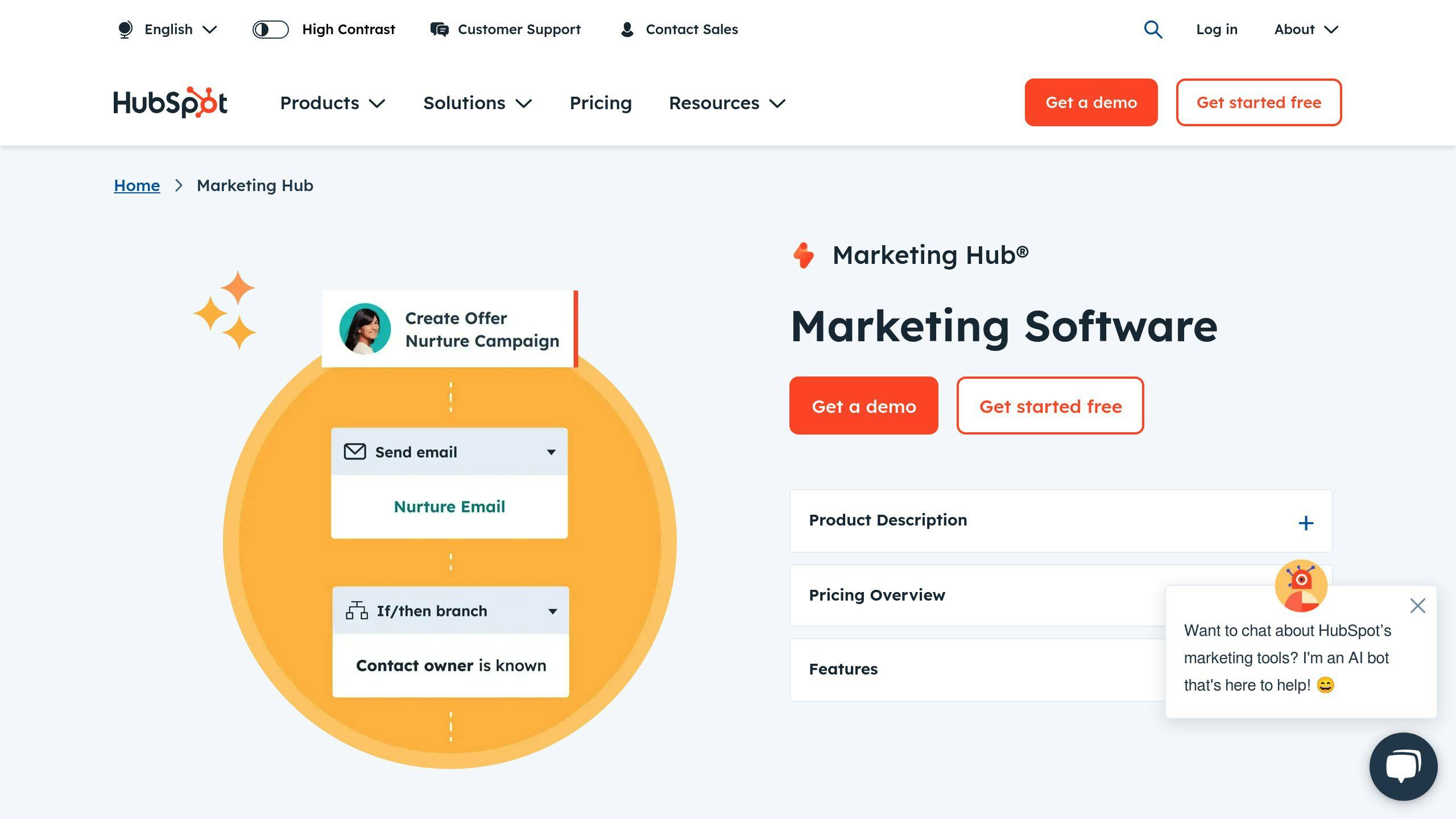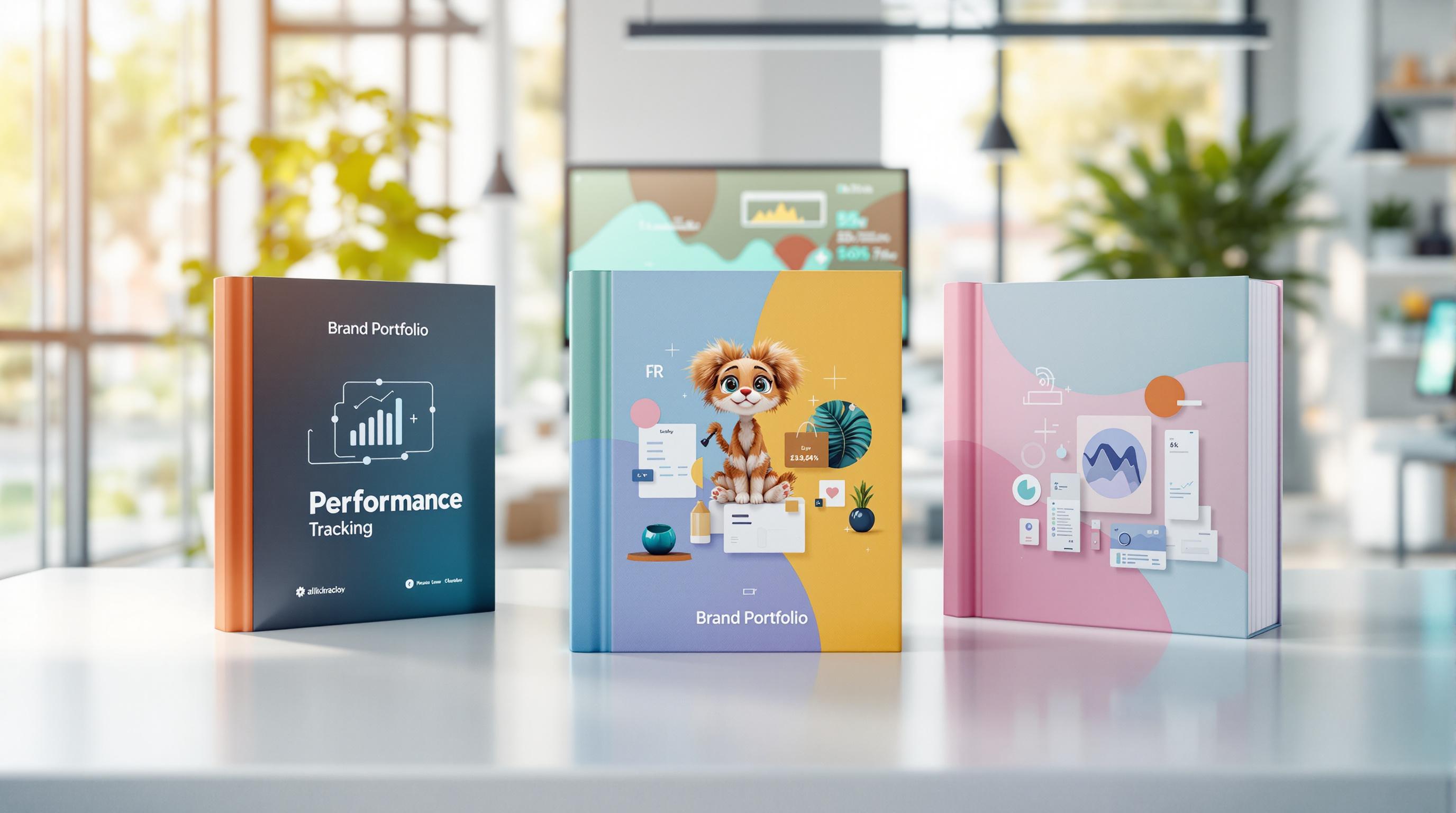Looking for the ideal B2B marketing platform? The right choice can streamline your workflows, boost ROI, and support your business growth. Here's a quick guide to help you decide:
-
Key Features to Look For:
- Integration with your existing tools
- Advanced analytics for smarter decision-making
- Automation to save time and improve efficiency
- Scalability to grow with your business
-
Top Platforms Compared:
- HubSpot: Easy to use, great for SMBs, scalable.
- Marketo: Powerful analytics, ideal for enterprises.
- Salesforce: Strong CRM integration, enterprise-grade.
- The B2B Ecosystem: AI-driven tools for strategy and execution.
-
Steps to Decide:
- Define your business needs and goals.
- Test platforms with demos or free trials.
- Gather input from key teams (marketing, IT, sales, finance).
- Assess costs, ROI, and long-term scalability.
Pro Tip: Focus on a platform that fits your current needs but can also adapt as your business grows. Ready to dive deeper? Let’s explore how to make the best choice.
Hubspot vs. Marketo: Marketing Automation Comparison

Understanding Your Business Needs
Before exploring platform features, it’s crucial to understand what your organization truly requires from a B2B marketing platform. Start by assessing your current challenges and mapping out future goals.
Reviewing Current Marketing Problems
Pinpoint the gaps in your existing marketing processes. Common issues might include inefficient lead scoring, reliance on manual workflows, or scattered analytics. For instance, if your team struggles with disconnected tools, prioritize platforms offering integrated reporting to streamline your efforts.
Planning for Growth
Your platform should grow with your business. Think about both your current needs and where you plan to expand. Platforms with modular features and APIs can adapt to new channels or markets without requiring a complete overhaul.
For example, if you anticipate adding social media automation, choose a platform that can handle this expansion effortlessly. This approach minimizes future costs and ensures your system stays relevant as your business evolves.
Defining Clear Goals
Establish specific, measurable goals for implementing your B2B marketing platform. Focus on metrics that matter, such as:
| Goal Category | Key Metrics |
|---|---|
| Lead Generation | Qualified leads per month |
| Revenue Impact | Marketing ROI |
| Operational Efficiency | Time saved on routine tasks |
Make sure these goals align with your broader business objectives. For example, if your company wants to boost enterprise clients by 50% next year, look for a platform with strong account-based marketing features. It’s also essential to pick a tool that matches your team’s technical skills, balancing ease of use with IT requirements.
Once you’ve outlined your business needs, you can start evaluating platform features that align with your objectives.
Features to Look for in a B2B Marketing Platform
Once you’ve identified your business needs, it’s time to zero in on the features that will help achieve your marketing goals. Look for tools that not only meet your current requirements but can also grow with your business.
Compatibility with Existing Tools
Your marketing platform should integrate smoothly with the tools you already rely on. This ensures your team can work efficiently without dealing with disconnected systems or data silos. Platforms like HubSpot and Marketo excel in this area, offering built-in integrations that simplify data sharing and provide a complete view of your customer journey - no heavy custom development required.
Analytics and ROI Measurement
Analytics are non-negotiable for tracking performance and proving the value of your marketing efforts. Look for platforms that offer tools like:
| Analytics Feature | How It Helps |
|---|---|
| Lead Scoring | Focus on the most promising prospects. |
| Revenue Attribution | Connect marketing efforts to revenue. |
| Customer Journey Mapping | Refine how you engage at every touchpoint. |
For example, Marketo’s analytics tools help track campaigns across channels and provide detailed ROI insights, making it easier to fine-tune your strategies.
Automation for Marketing Tasks
Automation is key to saving time while keeping your campaigns personalized. The best platforms let you set up workflows that respond to customer behavior, whether it’s nurturing leads, managing email campaigns, or scheduling social media posts.
"A platform should be straightforward to use and operate, without requiring extensive technical knowledge." - The CMO, ABM Platform Requirements
sbb-itb-01010c0
Comparing Popular B2B Marketing Platforms
Many top platforms offer extensive integration options, ensuring smooth data flow between tools. Here's a closer look at how these platforms stack up, helping you decide which one fits your business best.
Platform Comparison Table
| Feature | HubSpot | Marketo | Salesforce | The B2B Ecosystem |
|---|---|---|---|---|
| Scalability | SMBs to mid-market | Enterprises | Enterprise-grade | Works for all sizes |
| Integration Options | 1,000+ integrations | Advanced API support | Extensive ecosystem | Custom API layer |
| Analytics | Built-in reporting | Advanced attribution | Einstein Analytics | AI-driven insights |
| Price Range | $800-3,200/month | $1,000-5,000/month | Custom pricing | Custom solutions |
Now, let’s break down the strengths and trade-offs of each platform to help you make an informed decision.
Pros and Cons of Leading Platforms
HubSpot: This all-in-one solution is perfect for SMBs looking for easy-to-use marketing automation and reporting. It’s a great choice for businesses aiming to grow, thanks to its scalability and wide range of integrations.
Marketo: Designed for enterprises, Marketo excels in account-based marketing and advanced analytics. While it has a steeper learning curve, it offers powerful tools for managing large-scale campaigns.
Salesforce: Known for its strong sales and marketing alignment, Salesforce provides extensive customization and enterprise-level capabilities. It’s a smart pick for companies that need seamless CRM integration and a robust ecosystem.
Spotlight on The B2B Ecosystem

Among these platforms, The B2B Ecosystem stands out with its AI-driven tools designed specifically for B2B growth. It combines strategic insights with tools that help businesses plan and execute effective marketing strategies.
Here’s what sets it apart:
- GTM Brain: Helps craft data-backed go-to-market strategies.
- TAM Analyst: Delivers deep market analysis and opportunity evaluation.
- AI Process Optimizer: Simplifies and improves marketing workflows.
What makes The B2B Ecosystem unique is its ability to offer both high-level strategy and hands-on tools. This makes it a great option for businesses looking for well-rounded B2B marketing support.
Steps to Make the Final Choice
After reviewing popular platforms, it's time to finalize your decision. A thorough evaluation should take into account both technical needs and business goals.
Assessing Costs and ROI
When analyzing costs, look beyond just the subscription fees. Consider additional expenses like implementation, integration, and ongoing maintenance. For example, while HubSpot plans start at $800/month, the total investment often grows with training and feature upgrades. Choose platforms that clearly boost ROI, whether through automation or better lead conversions.
| Cost Component | Key Considerations | Impact on ROI |
|---|---|---|
| Implementation | Training, setup, migration | Initial investment |
| Subscription | Features, user seats, contact limits | Recurring cost |
| Integration | API access, third-party tools | Streamlined workflows |
| Maintenance | Updates, support plans | Long-term reliability |
Once you’ve crunched the numbers, it’s time to put the platform to the test.
Trying Demos and Free Trials
Getting hands-on experience is crucial to evaluate usability and functionality.
"Successful companies test top platforms with real data to uncover integration challenges and workflow issues before committing."
During demos or free trials, focus on:
- Running your typical marketing workflows
- Testing how well it integrates with your current tools
- Checking reporting features using real data
- Assessing whether the interface is user-friendly for your team
However, testing isn’t enough - input from key teams ensures the platform will work for everyone.
Getting Input from Key Teams
Collaboration across departments is critical to ensure the platform meets everyone’s needs. For example, marketing teams often prioritize campaign automation, while IT focuses on security and integrations. Structured feedback should be gathered from:
- Marketing team: Workflow automation and campaign management tools
- Sales team: CRM integration and lead scoring capabilities
- IT department: Security and technical requirements
- Finance: Budget alignment and ROI expectations
This cross-team approach helps spot potential roadblocks early and ensures the platform works for all stakeholders.
Conclusion: Choosing the Best Platform for Your Business
Once you've weighed the features, costs, and team input, it's time to make a decision that aligns with your business strategy. Many businesses see noticeable efficiency improvements within the first year of using a platform that fits their needs.
The success of your platform depends on how well it matches your goals, scales with your growth, and fits your budget. For example, while HubSpot's $3,600/month plans might seem pricey, companies like Atlassian achieved a 40% reduction in acquisition costs by leveraging scalable automation.
Choosing the right B2B marketing platform isn't just about features. It should:
- Integrate smoothly with your existing tools
- Provide clear analytics and help measure ROI
- Simplify automation to save time and resources
- Fit your team's workflow without unnecessary complexity
The key is finding a balance between meeting immediate needs and supporting long-term objectives. By evaluating your unique requirements and following the steps in this guide, you can choose a platform that drives growth and streamlines operations.


